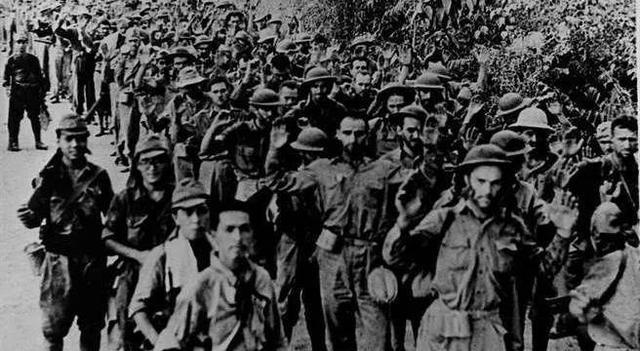As early as 27 July 1929, the Second Geneva Convention, the Convention on the Treatment of Prisoners of War, stipulated that States shall not mistreat prisoners of war. But in World War II, japan flagrantly violated this regulation, and as long as the soldiers of various countries captured by them were subjected to inhuman torture. The Japanese army once created an incident of prisoner abuse that shocked the world - the Bataan Death March.

After the Japanese attacked Pearl Harbor, they began to invade the Philippines. The United States sent reinforcements to fight with soldiers in the Philippines. The two armies fought fiercely on the Bataan Peninsula for four months, and the U.S.-Philippines coalition was forced to surrender to the Japanese due to the lack of support and assistance. At the time, the number of U.S.-Philippines troops surrendering was 78,000. To the surprise of these soldiers, the nightmare had only just begun.
The Japanese looted the prisoners of war and took them to a prisoner-of-war camp 120 kilometers away. On the way, the Japanese did not give the prisoners of war food, not even water. Some people couldn't stand it anymore, and when the Japanese found them in search of water and food, the Japanese killed them with bayonets or shot them. Even if some prisoners of war escaped the sight of the Japanese army and drank water, they would cause diarrhea and vomiting to death because the river was seriously polluted.
Witnesses recount that on the fifth day of the march, he witnessed the most inhumane crimes of the Japanese army. The Japanese stopped the prisoners of war who were walking in front and waited for the team behind them to catch up. One prisoner of war was suffering from severe malaria and had a high fever that made it difficult to even stand, let alone walk. A Japanese soldier walked up to him, picked up the butt of his rifle and slammed him on the head, knocking him to the ground. Then two prisoners of war were summoned and ordered to dig a pit to prepare to bury the prisoner alive.
When the pit was dug a foot deep, the Japanese told two prisoners of war to stop and threw the sick prisoners into the pit, which was rejected by both men. Unexpectedly, the Japanese shot and killed two people, and then found two prisoners of war from the team and asked them to dig a pit to bury them. The sick prisoner of war was not dead, and when the earth fell on him, he cried bitterly, but he still could not escape the fate of being buried alive.
The PRISONERS, who had no food or water, walked slowly, and the Japanese beat, shoved, and even stabbed them with bayonets. The Japanese changed shifts frequently, but the PRISONERs were required to catch up with the newly changed guards. As a result, the prisoners of war were allowed to march at twice the usual pace or they would be beaten. The Japanese army also compared the technique of decapitation on the way, the officer drew out the samurai sword, after doing the warm-up, raised the sword high, and swung it rapidly, and the prisoner of war was in a different place. Other Japanese soldiers chanted "Hooray! "Beheading has become their entertainment.
After arriving in San Fernando, the town was not destroyed by war. The Japanese drove the prisoners of war to the train station and put them in a battered stuffy tanker. The carriages were small, carrying only 25 to 30 men in normal times, but the Japanese squeezed 100 prisoners of war into the carriages. They couldn't breathe at all, and some were smothered alive. Only the prisoners of war who were close to the door survived. The car traveled for five hours before the prisoners reached their destination, the O'Donnell concentration camp. The disheveled, withered prisoners of war got out of the car and walked half-dead into the camp.
In what is arguably the most brutal event of World War II, 15,000 prisoners of war fell on the road. After arriving at the prisoner-of-war camp, the U.S.-Philippine coalition still did not get rid of the nightmare. The Japanese tortured them, forced them to work as coolies, and deliberately prevented them from eating. In two months, 26,000 prisoners of war were tortured to death. More than 70,000 people, and eventually more than half of the prisoners of war died at the hands of the Japanese.